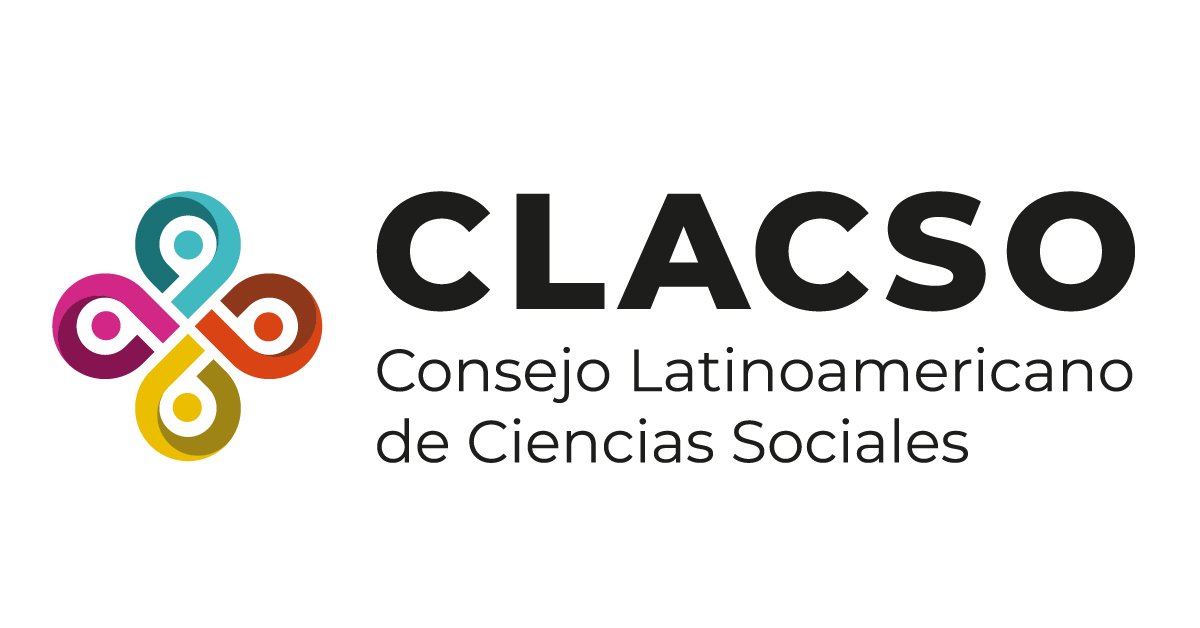La vegetación como herramienta bioclimática: determinación de su nivel de eficiencia en San Juan Argentina
Bioclimatic vegetation tool to determine vegetation efficiency level in San Juan, Argentina
Palabras clave:
bioclimatismo, instrumento de calificación, vegetación natural potencial, verde urbano, bioclimatism, qualification instrument, potential natural vegetation, urban greeneryResumen
La vegetación es ampliamente utilizada con fines bioclimáticos por proporcionar sombra a la envolvente arquitectónica y ayudar a reducir el deslumbramiento y la ganancia de calor interior. Además, participa en el intercambio energético entre el edificio y el medio ambiente. En este marco, el objetivo del presente trabajo es elaborar una Herramienta de Vegetación Bioclimática que permita conocer el grado de eficiencia de cada especie. Para su alcance, se definen las variables influyentes de la vegetación en el bioclimatismo, en base a un estudio teórico-bibliográfico. Seguidamente, se diseña la plantilla en software Excel y se aplica a tres especies típicas de la Provincia de San Juan. Los resultados exponen que las mismas obtuvieron calificación “aceptable”, alcanzando el álamo criollo el puntaje más elevado, seguido por el eucalipto y la mora. Se concluye que la implementación de la herramienta pone en valor los beneficios generados por la vegetación desde el aspecto bioclimático.
Abstract
Vegetation is widely used for bioclimatic purposes because it provides shade to the architectural envelope and helpsin glare reduction and interior heat gain. It also plays a role in the building-environment energy exchange. Thus, the objective of this work is to devise a Bioclimatic Vegetation Tool in order to know the degree of efficiency of each species. For its scope, we defined the influential variables of vegetation in bioclimatism, based on a theoretical and bibliographical study. Then, we designed the template using the Excel software and we applied it to three typical species of the San Juan province, Argentina. The results show these species obtained an "acceptable" rating, the poplar reaching the highest score, followed by the eucalyptus and blackberry. We conclude that the application of the tool highlights the benefits generated by vegetation from the bioclimatic aspect.
Citas
Aboelata, A. (2020). Vegetation in different street orientations of aspect ratio (H/W 1:1) to mitigate UHI and reduce buildings’ energy in arid climate. Building and Environment, 172, 01–16. https://doi.org/10.1016/j.buildenv.2020.106712
Alcalá, J., Sosa, M., Moreno, M., Quintana, C., Campos, A., y Holguin, C. (2008). Retención de polvo atmosférico en especies arbóreas indicadoras de la planeación urbana sustentable: ciudad de Chihuahua, México. Multequina, 17, 17–28. http://www.redalyc.org/articulo.oa?id=42801703
Calderón-Contreras, R., y Quiroz-Rosas, L. E. (2017). Analysing scale, quality and diversity of green infrastructure and the provision of Urban Ecosystem Services: A case from Mexico City. Ecosystem Services, 23, 127–137. https://doi.org/10.1016/j.ecoser.2016.12.004
Carrasco-Ríos, L. (2009). Efecto de la radiación ultravioleta-B en plantas. IDESIA, 27(3), 59–76.
Chaves-Barrantes, N. F., y Gutiérrez-Soto, M. v. (2017). Respuestas al estrés por calor en los cultivos. Aspectos moleculares, bioquímicos y siológicos. Agronomía Mesoamericana, 28(1), 237–253. https://doi.org/10.15517/am.v28i1.21903
Cúnsulo, M., Kurbán, A., Papparelli, A., y Montilla, E. (2013). Procesamiento de datos térmicos satelitales para la obtención de la isla de calor urbana. Avances en Energías Renovables y Medio Ambiente, 17, 1–8.
Cúnsulo, M., Papparelli, A., y Kurbán, A. (2011). Variación temporal de la isla de calor y de la ocupación urbana en San Juan-Argentina. Avances en Energías Renovables y Medio Ambiente,15.
Darvish, A., Eghbali, G., y Eghbali, S. R. (2021). Tree-configuration and species effects on the indoor and outdoor thermal condition and energy performance of courtyard buildings. Urban Climate, 37. https://doi.org/10.1016/j.uclim.2021.100861
Díaz, G. (2005). Vegetación y calidad ambiental de las ciudades. Arquitectura y Urbanismo, 26(1), 44–49.
Diebel, J., Norda, J., y Kretchmer, O. (2022). El clima y el tiempo promedio en todo el año en Ciudad de San Juan, Argentina. WeatherSpark. https://es.weatherspark.com/y/27327/Clima-promedio-en-Ciudad-de-San-Juan-Argentina-durante-todo-el-a%C3%B1o#:~:text=En%20Ciudad%20de%20San%20Juan%2C%20los%20veranos%20son%20c%C3%A1lidos%2C%20los,m%C3%A1s%20de%2038%20%C2%B0C.
Duval, V. S., Benedetti, G. M., y Baudis, K. (2020). El impacto del arbolado de alineación en el microclima urbano. Bahía Blanca, Argentina. Investigaciones Geográficas, 73, 171–188. https://doi.org/10.14198/INGEO2020.DBB
Duval, M. S., Benedetti, G. M. y Campo, A. M. (2015). Relación clima-vegetación: adaptaciones de la comunidad del jarillal al clima semiárido, Parque Nacional Lihué Calel, provincia de La Pampa, Argentina. Investigaciones Geograficas, 2015(88), 33–44. https://doi.org/10.14350/rig.48033
Flores de la O., J. L., Villanueva-Solis, J., y Quiroa-Herrera, J. A. (2018). Evaluación de los efectos microclimáticos que tiene la vegetación en la mitigación de la isla de calor urbana: Parque en la ciudad de Torreón, México. Revista de Ciencias Ambientales, 52(2), 123–140. https://doi.org/http://dx.doi.org/10.15359/rca.52-2.7
Gobierno de San Juan. (2021). Caracterización de la Provincia de San Juan. Plan estratégico San Juan. https://planestrategico.sanjuan.gob.ar/?page_id=314
Hernández, A. (2013). Manual de diseño bioclimático urbano. Recomendaciones para la elaboración de normativas urbanísticas. Instituto Politécnico de Bragança (1° ed.,vol. 1).
IRAM. (2012). Norma IRAM 11603. Acondicionamiento térmico de edificios.
Kurbán, A. (2017). Verde Urbano. Contribución Bioclimática a la Sustentabilidad de Ambientes Áridos. [Tesis doctoral]. Universidad Nacional de San Juan.
Kurbán, A., y Cúnsulo, M. (2016). Confort térmico en espacios verdes urbanos de ambientes áridos. Revista Hábitat Sustentable, 7(1), 32–43. https://doi.org/https://doi.org/10.22320/07190700.2017.07.01.04
Lai, A., Maing, M., y Ng, E. (2017). Observational studies of mean radiant temperature across different outdoor spaces under shaded conditions in densely built environment. Building and Environment, 114, 397–409. https://doi.org/10.1016/j.buildenv.2016.12.034
Li, Z., Chow, D. H. C., Yao, J., Zheng, X., y Zhao, W. (2019). The effectiveness of adding horizontal greening and vertical greening to courtyard areas of existing buildings in the hot summer cold winter region of China: A case study for Ningbo. Energy and Buildings, 196, 227–239. https://doi.org/10.1016/j.enbuild.2019.05.025
Lin, B.-S., y Lin, Y.-J. (2010). Cooling effect of shade trees with different characteristics in a subtropical urban park. HortScience, 45(1), 83–86.
Lindén, J., Fonti, P., y Esper, J. (2016). Temporal variations in microclimate cooling induced by urban trees in Mainz, Germany. Urban Forestry yUrban Greening Journal, 198–209. https://doi.org/http://dx.doi.org/10.1016/j.ufug.2016.09.001
Martini, A., Biondi, D., y Batista, A. C. (2017). Urban Forest Components Influencing Microclimate and Cooling Potential1. Revista Árvore, 41(6). https://doi.org/10.1590/1806-90882017000600003
Menéndez Valderrey, J. L. (2014). Las Hojas. Asturnatura. https://www.asturnatura.com/plantas/hojas.html
Morakinyo, T. E., y Lam, Y. F. (2016). Simulation study on the impact of tree-configuration, planting pattern and wind condition on street-canyon’s micro-climate and thermal comfort. Building and Environment, 103, 262–275. https://doi.org/10.1016/j.buildenv.2016.04.025
Ochoa de la Torre, M. J. (1999). La vegetación como instrumento para el control microclimático.[Tesis doctoral]. Universidad Politécnica de Cataluña.
Palme, M., Privitera, R., y la Rosa, D. (2020). The shading effects of Green Infrastructure in private residential areas: Building Performance Simulation to support urban planning. Energy and Buildings, 229. https://doi.org/10.1016/j.enbuild.2020.110531
Papparelli, A., Kurbán, A., y Cúnsulo, M. (2013). Isla de calor y ocupación espacial urbana en San Juan, Argentina: análisis evolutivo. Cuadernos de Vivienda y Urbanismo, 4(7), 110–120. https://doi.org/https://doi.org/10.11144/Javeriana.cvu4-7.icoe
Plantasnet. (2015). Las Hojas. http://www.plantasnet.com/recoleccion/anatomia_v2.htm
Ráez Sánchez, A. (2018). Naturación urbana como instrumento para la sostenibilidad global. Metodología integral para la planificación de espacios verdes en el medio urbano.[Tesis de grado]. Universidad Politécnica de Madrid.
Ripoll, V., y Kurbán, A. (2011). Estudio Bioclimático de la Forestación Urbana en la ciudad de San Juan. FAUD-UNSJ.
Rojas, G. M., Roset, J., y Navés, F. (2015). La vegetación en el confort micro climático. Comparación de especies del clima Mediterráneo de Barcelona, España. Architecture, City and Environment, 10(29), 59–84. https://doi.org/10.5821/ace.11.29.3589
Samach, A., y Wigge, P. A. (2005). Ambient temperature perception in plants. Current Opinion in Plant Biology, 8(5), 483–486. https://doi.org/10.1016/j.pbi.2005.07.011
Santamouris, M. (2020). Recent progress on urban overheating and heat island research. Integrated assessment of the energy, environmental, vulnerability and health impact. Synergies with the global climate change. Energy and Buildings, 207. https://doi.org/10.1016/j.enbuild.2019.109482
Shivaram, R., Yang, Z., y Jain, R. K. (2021). Context-aware Urban Energy Analytics (CUE-A): A framework to model relationships between building energy use and spatial proximity of urban systems. Sustainable Cities and Society, 72. https://doi.org/10.1016/j.scs.2021.102978
Smithers, R. J., Doick, K. J., Burton, A., Sibille, R., Steinbach, D., Harris, R., Groves, L., y Blicharska, M. (2018). Comparing the relative abilities of tree species to cool the urban environment. Urban Ecosystems, 21(5), 851–862. https://doi.org/10.1007/s11252-018-0761-y
Tan, Z., Lau, K. K. L., y Ng, E. (2017). Planning strategies for roadside tree planting and outdoor comfort enhancement in subtropical high-density urban areas. Building and Environment, 120, 93–109. https://doi.org/10.1016/j.buildenv.2017.05.017
Tovar Jiménez, E. I. (2011). Manejo bioclimático de vegetación nativa de México, de raíz autoadherente, en envolventes arquitectónicas como dispositivo de control térmico, aplicado a un modelo de casa habitación en la ciudad de México. [Tesis de maestría]. Universidad Autónoma Metropolitana de México.
Troiani, H. O., Prina, A. O., Muiño, W. A., Tamame, M. A., y Beinticinco, L. (2017). Botánica, morfología, taxonomía y fitogeografía (1° ed., Vol. 1). Universidad Nacional de La Pampa.
Vaz Monteiro, M. V., Handley, P., Morison, J. I. L., y Doick, K. J. (2019). The role of urban trees and greenspaces in reducing urban air temperatures.
Villavicencio Ordóñez, J. E. (2011). La vegetación como instrumento para el control microclimático en el espacio urbano. [Tesis de grado]. Universidad Técnica Particular de Loja.
Zamorano, E. (2020). Los pulmones del ecosistema. https://www.elconfidencial.com/alma-corazon-vida/2020-05-08/contaminacion-arboles-ciudades-salud-publica_2583123/#:~:text=Hay%20muchas%20clasificaciones%20de%20cu%C3%A1les,los%20abetos%20y%20los%20cipreses.














